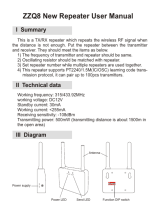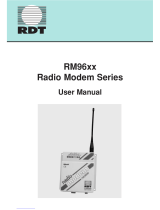SATEL-EASy+
User Manual
Version 1.21
7
11 SL COMMANDS .......................................................................................... 47
11.1 Changing parameters using the SL COMMANDS ................................ 47
11.2 Command Mode ................................................................................... 47
11.2.1 Entering to command mode - +++ ............................................................................ 48
11.2.2 Return to data mode - --- ........................................................................................... 48
12 CHANNEL LIST............................................................................................ 49
13 REPEATER MODE AND ADDRESSING ......................................................... 50
13.1 Repeater ............................................................................................... 50
13.2 Addressing ........................................................................................... 51
13.2.1 Connection between two points ................................................................................... 54
13.2.2 System of one base station and several substations ........................................................ 55
13.3 Using repeaters and addresses in the same system ........................... 55
13.3.1 System with several repeaters ...................................................................................... 56
13.3.2 Repeater chain using address pairs .............................................................................. 57
13.3.3 Repeater chain using dual addressing .......................................................................... 58
13.3.4 Redundant repeater chain ........................................................................................... 58
14 NMS NETWORK MANAGEMENT SYSTEM ................................................... 59
14.1 System components .............................................................................. 60
14.2 NMS - Installation ................................................................................ 60
14.3 NMS - Usage ........................................................................................ 61
14.4 NMS functionality ................................................................................. 61
14.5 Requirements for the user system ....................................................... 62
14.6 Designing Systems and Networks ....................................................... 62
15 INSTALLATION ........................................................................................... 63
15.1 Installation of the radio modem .......................................................... 63
15.1.1 Installation Requirements ............................................................................................ 64
15.1.2 Installation Parts ........................................................................................................ 64
15.1.2.1 Installation Plate ......................................................................................................... 64
15.1.2.2 Velcro tapes .................................................................................................................. 65
15.1.3 DIN Installation Part ................................................................................................... 65
15.1.4 Grounding, using the housing ..................................................................................... 66
15.1.5 Grounding, using the installation plate ......................................................................... 66
15.1.6 Grounding cable and screws ....................................................................................... 67
15.1.7 Grounding the antenna .............................................................................................. 67






















